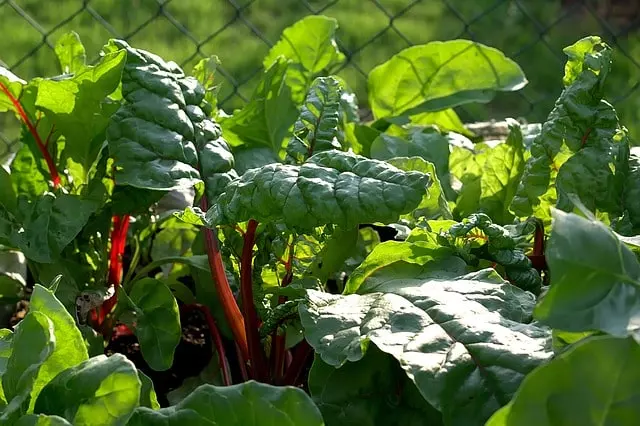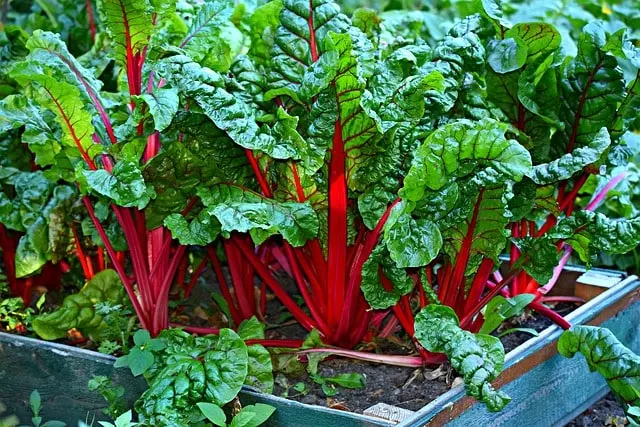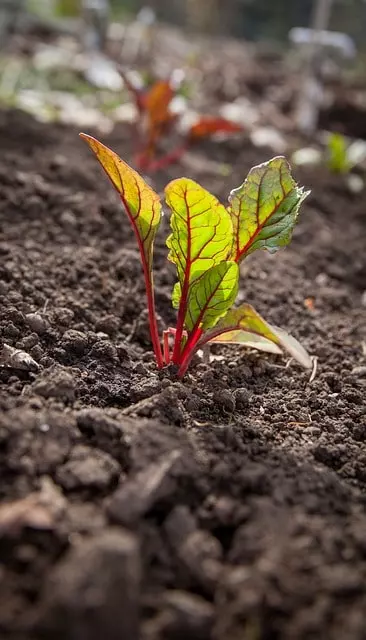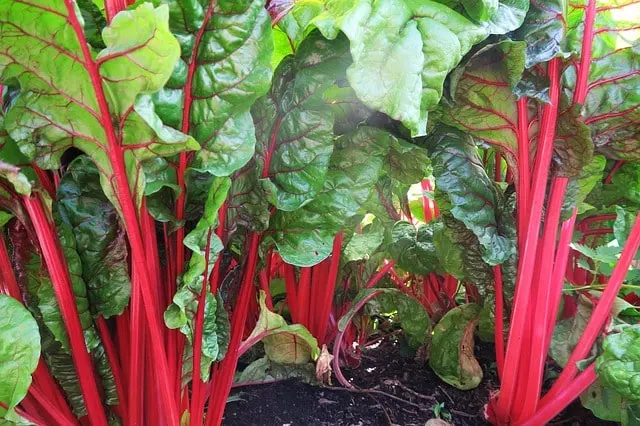Its scientific name is Beta vulgaris L. var. cicla, Swiss chard is a plant native to Europe, widely cultivated in temperate zones around the world. Swiss chard has a tuberous root, unlike its native plant. Its leaves are light green and very large, while its stems are white, yellow, or red depending on the Swiss chard cultivar used. In this article, we will learn how to grow Swiss chard, but first, let’s learn a little about its properties:
Swiss chard is a plant very rich in nutrients and has been known to have been cultivated for more than 4000 years. It has vitamins such as K, A, C, and E, which is why it promotes healthy bones and eyesight, as well as acting as a powerful antioxidant, which fights against free radicals, the main responsible for premature aging of the skin.
This plant has minerals such as iron, which increases immunity and has an anti-inflammatory action, helping in diseases such as asthma, rheumatoid arthritis, and osteoarthritis. It also possesses potassium, helping to keep blood pressure under control, as well as cardiac function. It also possesses syringic acid and fiber, helping in the process of regulating blood sugar levels, and is great for those suffering from diabetes.
Table of Contents
How to Grow Swiss Chard
Swiss chard seed can be sown in situ or by transplanting seedlings when it reaches approximately 2″ (5 cm) in height. We recommend using quality seeds to have a superior germination rate (Order here).
The seeds can be left in a container of water for 24 hours to facilitate germination as with beet seeds. Subsequently, the seeds should be planted at a depth of 1″ (2.5 cm) when planted directly in the soil. If rows are to be used, each seed should be planted 3″ (8 cm) apart. Since Swiss chard needs a lot of space for the roots to grow, each row should be spaced 18″ (45 cm) apart. On the other hand, if it is going to be planted in a pot, you should put one per pot with a minimum depth of 10″ (25 cm).
- Grow your own beautiful and nutritious Swiss chard: This heirloom rainbow mix Swiss chard is a stunning vegetable that comes in a variety of colors, including red, orange, yellow, green, and purple. It is also a good source of vitamins A and K, as well as fiber.
- Non-GMO and easy to grow: These seeds are non-GMO, so you can be sure that you are planting seeds that are safe for your family and the environment. Swiss chard is also a relatively easy vegetable to grow, making it a great choice for beginner gardeners.
- Delicious and versatile: Swiss chard can be enjoyed in a variety of ways, both raw and cooked. It can be eaten in salads, soups, stews, and stir-fries. It is also a great addition to smoothies and juices.
Companion Plants for Swiss Chard
It is favorably associated with Celery, Cabbage, Onions, Cauliflower, Beans, Lettuce, and Carrots. It is not recommended to associate Swiss chard with Asparagus, Leeks, and Tomatoes.

When To Grow Swiss Chard
Regarding how to plant Swiss chard, its ideal climate is temperate, with temperatures between 60°F and 65°F (16 ° C and 18 ° C), but it can also be grown in colder and warmer climates, being especially resistant to low temperatures and light frosts.
Another point to keep in mind about how to plant Swiss chard is that it needs the presence of sunlight to grow well, which is why it should be in a place where it has at least two hours of direct sunlight daily. In very hot regions it can be grown in partial shade.
The ideal time to start the process of how to plant Swiss chard is 2 to 3 weeks before the last frost of winter, ideally in spring, so that they can fully develop in summer. If you live in an area with a not-so-aggressive winter, you can plant in late summer to be able to harvest in winter.
The soil used for planting Swiss chard should be well-drained, fertile, rich in organic matter, and rich in nitrogen. The Swiss chard crop is very tolerant to soil pH, except for overly acidic soils.

How to Care Swiss Chard
When the crop has 5 to 6 leaves, the smallest plants are removed (these can be transplanted to another site until they grow a little more), leaving the best ones at 6″-8″ (15-20 cm) from each other.
The most important disease is smallpox (small rounded yellowish-brownish spots are observed). It can be prevented and controlled with Bordeaux Broth or Copper Oxychloride. Virosis also appears (curling or deformation of leaf tips). In this case, the presence of aphids should be prevented by utilizing traps and attractant crops. The insects that can damage this crop are caterpillars, the Moorish bug and the common green bug, and the black peach aphid. They can be prevented with garlic preparation.
Watering The Swiss Chard Crop
Swiss chard needs to be watered 2 to 3 times a week, but this depends on the warmth of the climate. Ideally, it should be watered flush to keep the soil moist, but it should not remain soggy.

Harvesting Of Swiss Chard
Swiss chard is harvested 3 to 4 months after sowing. Harvesting is done by cutting the leaves one by one, starting with the strongest, two months after transplanting. The maximum harvest is from August to October.
Harvesting will depend on the time of year of the crop, but as a guide, the following parameters can be established: 60-80 days in spring sowing; 90-100 days in autumn-winter sowing.
The right time will be when the leaves have reached a good size, and the whole plant can be cut or only the outer leaves. In the latter case, new leaves continue to develop in the center of the plant, and two or three cuts can be made.
We hope this article on how to grow Swiss chard will be of great help and that you will have an excellent harvest. We recommend our article about Fast Growing Vegetables For Impatient Gardeners.


